In the New Testament many names and various titles are given to Christ. Amongst these there is that of ‘physician’, not because he had attended a specific school of medicine but because of his constant interest in sick people and above all else because of the fact that he engaged in a sequence of healings that marked his life, his preaching, and even his ‘ideal day’ (Mk 1:14-29).
This subject forms a part of a series of reflections that made up a heritage of the Church: Christ the Physician was not only part of a theology of medicine that was developed during the early years of Christianity but was also present in many contexts, for example the liturgy, preaching and, at times, also, the epistolary correspondence of known and unknown saints. The literature on the subject is rather vast (above all in German).
First of all, the reference to the image of a physician could already be deduced from the Gospel according to St. Luke 4:23: ‘Doubtless you will quote to me this proverb, ‘Physician heal yourself; what we have heard you did at Capernaum…”’, as it could be from the sentence in the synoptic gospels: “those who are well have no need of a physician, but those who are sick” (Lk 5:31; Mk 2:17; Mt 9:12). We often encounter these quotations in patristic thought.
If we look closely at the description of the episodes narrated by the gospels, we can perceive a fundamental aspect of that title: Jesus healed many sick people and every kind of illness. How can we describe the therapeutic activity of Christ? If we look at things closely, it is possible to abstract and emphasise a number of points:
– The healings took place in the street or in people’s homes but never in places of worship (temples or synagogues, with the exception of the healing of a possessed man).
– Each healing is presented as different, both in the way the healing is carried out and as regards the relationship that Jesus has with the sick person.
– Jesus’s therapeutic action is free and involves no charge.
– Nowhere is it stated that he had attended a medical school: it is only in virtue of the power of his words that he heals and saves (the man born blind; the paralytic…).
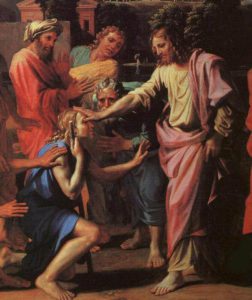 If we then take into account the way in which Jesus related to sick people, we touch the summit of the discretion, the sensitivity and the capacity for dialogue of the Lord. We are dealing here with a relationship that was profoundly personalised. Each encounter takes a different form. It is enough to survey all the healings to be perfectly aware of this. To give just one example: the meeting with, and the healing of, the blind man Bartimaeus, to whom Christ addresses two questions: what do you want me to do for you? What are you asking for?
If we then take into account the way in which Jesus related to sick people, we touch the summit of the discretion, the sensitivity and the capacity for dialogue of the Lord. We are dealing here with a relationship that was profoundly personalised. Each encounter takes a different form. It is enough to survey all the healings to be perfectly aware of this. To give just one example: the meeting with, and the healing of, the blind man Bartimaeus, to whom Christ addresses two questions: what do you want me to do for you? What are you asking for?
The Lord never engages in ‘preaching’ or makes comforting speeches to sick people about the meaning and value of suffering.
It is for this reason above all else that the Fathers of the Church address the question in catechesis, speeches, and in commentaries on these episodes that involve healing.
One aspect that helped to bring out this image was the role of the apologists of the first centuries of Christianity who were involved in defending the faith against both pagans and in the diatribes with the first forms of heresy. For pagans above all else (but we cannot exclude also for the first Christians who came from paganism), the great physician was Asclepius who was venerated as a god and whose sanctuaries were widespread, being found in Trikala, Epidaurus, Kos and Pergamum. In these sanctuaries the practice of incubatio took place: sick people were presented at his temple near to the waters of some spring, laid on the ground, and rested there for a whole night. In the morning they narrated their dreams in which Asclepius had appeared providing advice for a diagnosis of their malady and its cure.
To return to the subject of Christ the physician, we cannot forget a number of authors of both the Greek and Roman worlds who specified the qualities of Christ, the physician of ‘bodies and souls’, emphasising at times one aspect (the material) and at times the other (the spiritual), but always as integral parts of a single purpose: to highlight Christ’s concern for man and for man in his totality. Today we would say in a holistic approach.
A study published in 1972 by the Jesuit Gervais Dumeige (‘Le Christ médecin…’ in Rivista di archeologia cristiana, 48, 1972, 115-141) examines Christian literature of the early centuries and in particular that of the Greek world. We thus are led to remember a number of authors such as Ignatius, the Bishop of Antioch; Justin; Irenaeus; Clement the Alexandrine; and Origen.
Whereas Christian writers such as Jerome saw Christ as the true physician, considering him a Hippocrates of the Spirit, and the God of the Old Testament was seen as a true physician who was very merciful and very wise, it was Augustine who ‘was pre-eminent amongst ecclesiastical writers of the West in using the image of Christus medicus’ (Arbesmann, ‘The Concept of Christus Medicus in St. Augustine’, in Traditio 10, 1954, 2.). Indeed, St. Augustine laid emphasis on the method and the qualities of the physician of humanity. Because of the way in which he expressed himself, the Bishop of Hippo stressed the dual cliché of the physician/surgeon who cut/burnt, but he also warned: ‘however one should remember that the hand of a physician is not that of a malefactor’ (Espos. sul sal. 39, 21).
The saint of Hippo often observed that a human physician can make a mistake even if he promises health because his therapy may not be effective. The situation with God was very different: ‘God made your body, He made your soul, and therefore He knows how to recreate what He created and reshape what He shaped’ (Espos. sul sal. 102, 5).
One of the therapies of Augustine’s Christ the physician was humility and this is why he was declared to be the medicus humilis. He was the ‘divine physician, who, therefore, although he was God, became man so that man could see himself as man. This is very effective medicine’ (Discorso 77, 7, 11).
That history is a history of salvation where God constantly intervenes in various ways is something that Augustine upheld in a clear and succinct way, specifically in a discourse on the ordination of a bishop: ‘From the East to the West, mankind lay like a great sick man and called on the infallible Physician. At the outset this Physician sent out his helpers (the prophets) and subsequently he himself came when some people had lost all hope. He was like a physician who sends out his assistants where there is an easy task, and when a dangerous worsening of the condition takes place, intervenes personally’ (Discorso 340/A, 5).
But it is important for man to see himself as the patient given that Christ is always the physician.
To conclude: the symbolism of the images is based upon a change in condition whose necessary mediation is suffering which creates a diminution at the level of having (a gangrenous body loses one of its limbs) but is transformed into relevance at the level of being (healing and saving the person in his or her totality). One passes from quantity to quality. The field of the imagination is traversed every time by journeys of desire which, except when going towards suffering, goes beyond the boundaries of technology and in addition opens up its boundaries with great audacity.



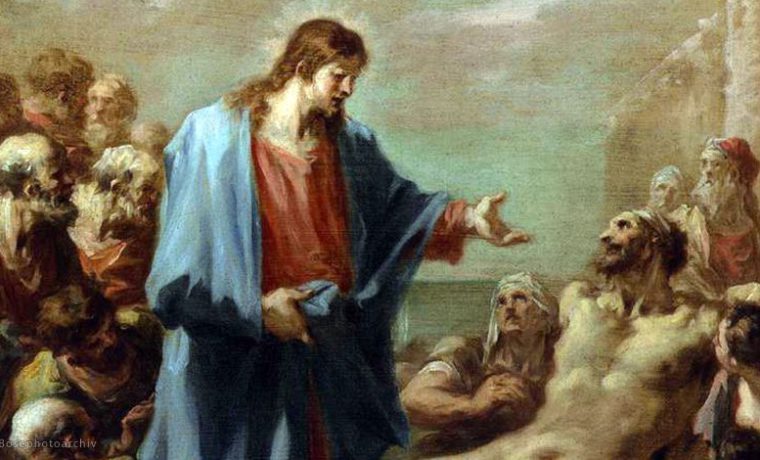
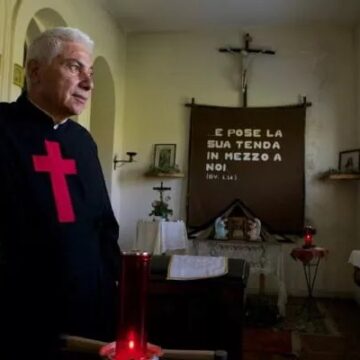

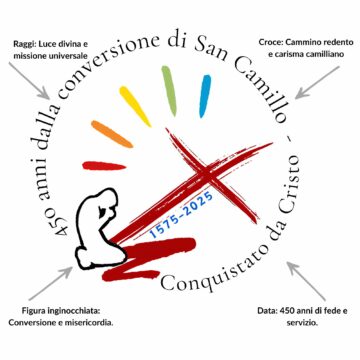


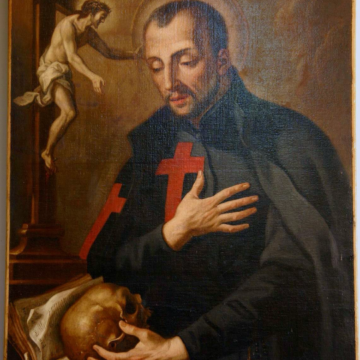


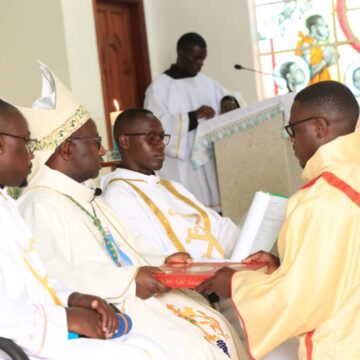
Camillians on Facebook
Camillians on Twitter
Camillians on Instagram